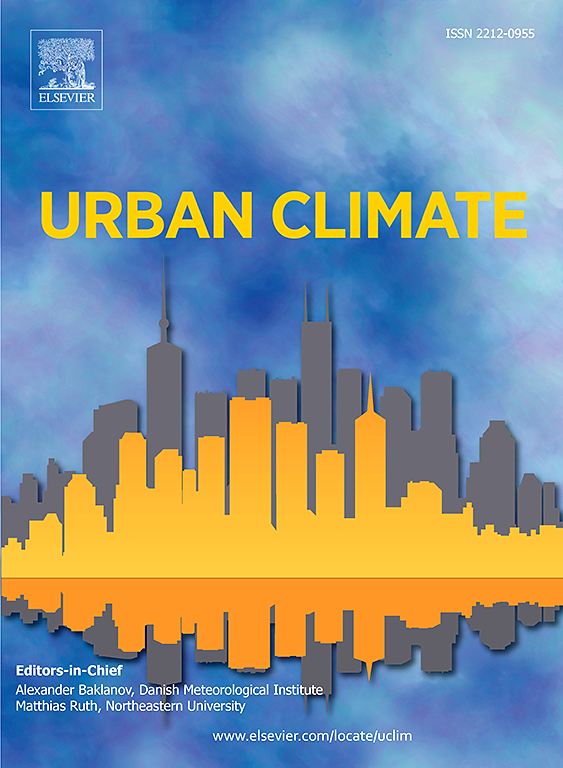Urban forests mitigate extreme heat exposure in a vulnerable tropical city
IF 6
2区 工程技术
Q1 ENVIRONMENTAL SCIENCES
引用次数: 0
Abstract
Urban forests (UF) have been documented as a strategy for mitigating urban heat in population centers of the Global North that are affected by extreme temperatures. However, few have studied this ecosystem service in such climate-vulnerable, humid, tropical cities with less than 50,000 inhabitants, limited resources, and weak adaptive capacity to heatwaves. Accordingly, we studied the tropical city of Puerto Carreño, Colombia, to explore the links between tree heat regulation, human thermal comfort, and the subsequent effects on human well-being during the extremely hot season of 2021. Using a mixed methods approach, we measured hourly temperature and humidity for six months with sensors in paired exposed and tree-shaded sites in eight locations across the city, while also surveying residents' thermal perception during the heat event. We found thermal regulation provided by UF was non-linear and increased exponentially with ambient temperature, for example reaching 8.7 °C at 44 °C, but only 2 °C at 34.9 °C. UF shading mitigated extremely high discomfort indices by a factor of 10 during the hottest hours and substantially reduced the potential heat lethality associated with such events. Survey respondents also noted the positive co-benefits of trees for human health, provision of climate-regulating ecosystem services, fruit production, and tree shade, while the discomfort index is likely underestimating reported felt comfort in such extremely hot tropical places. Measuring the link between urban forest structure, ecosystem services, and human well-being provides evidence for the use of trees as a sustainable Nature-Based climate adaptation strategy for vulnerable, resource-poor, tropical cities in the Global South.
求助全文
约1分钟内获得全文
求助全文
来源期刊

Urban Climate
Social Sciences-Urban Studies
CiteScore
9.70
自引率
9.40%
发文量
286
期刊介绍:
Urban Climate serves the scientific and decision making communities with the publication of research on theory, science and applications relevant to understanding urban climatic conditions and change in relation to their geography and to demographic, socioeconomic, institutional, technological and environmental dynamics and global change. Targeted towards both disciplinary and interdisciplinary audiences, this journal publishes original research papers, comprehensive review articles, book reviews, and short communications on topics including, but not limited to, the following:
Urban meteorology and climate[...]
Urban environmental pollution[...]
Adaptation to global change[...]
Urban economic and social issues[...]
Research Approaches[...]
 求助内容:
求助内容: 应助结果提醒方式:
应助结果提醒方式:


